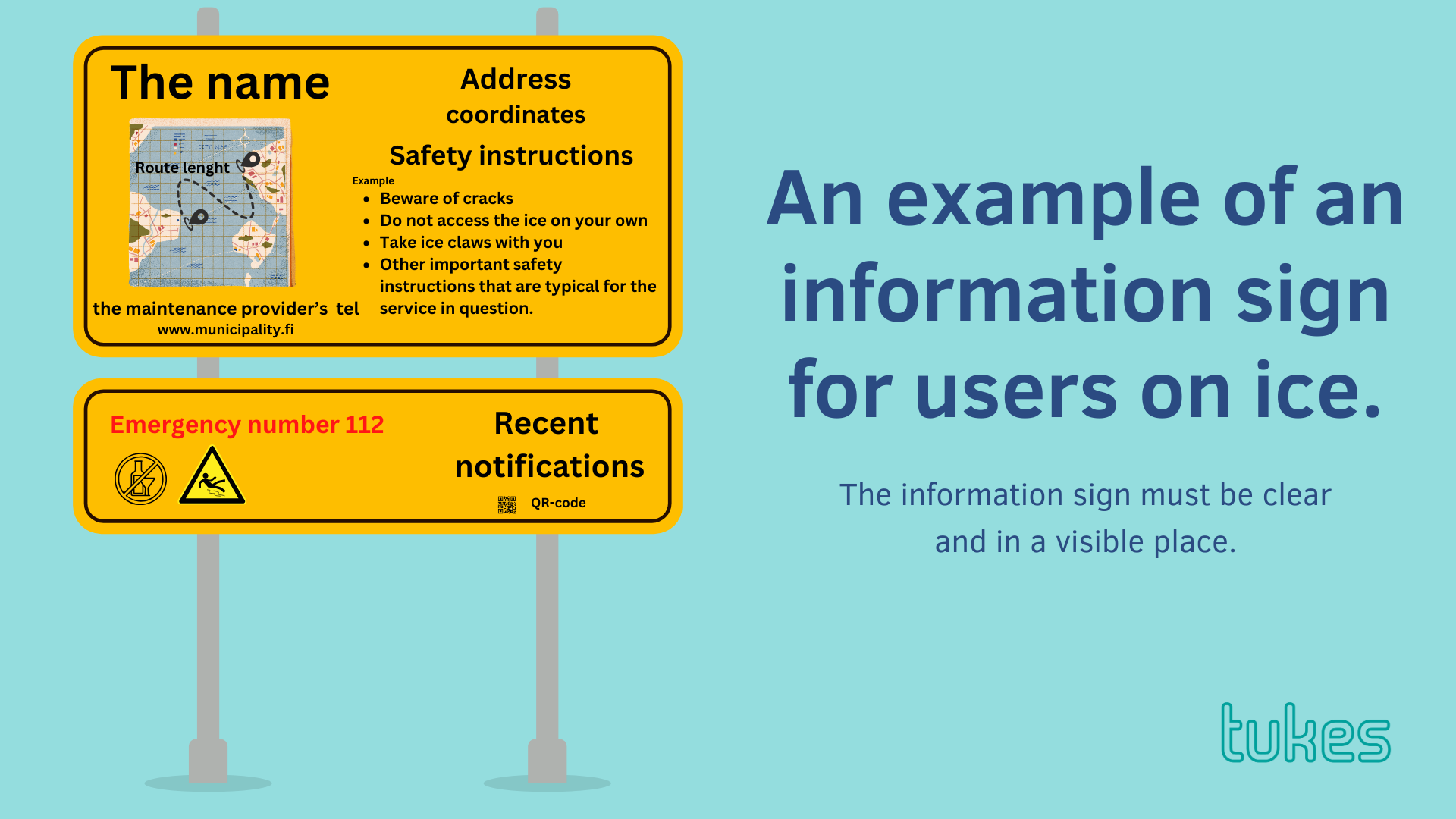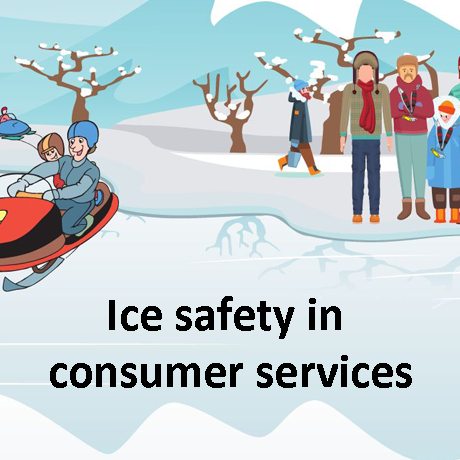Tell customers how to be safe on ice
Provide service users with up-to-date and measured information about the load-bearing capacity of ice. Also monitor any ice safety notifications issued by the local authorities and pass them on to customers, if required.
Mark the ice area used in your services sufficiently clearly. Guide customers to and from the ice through safe routes. Use maps, signs, markings, sticks, fences and other means to ensure that customers remain in the area verified to be safe. When service users move around on ice at high speeds using skates or kicksleds, for example, ice conditions may change unexpectedly. Make sure that customers cannot accidentally move outside the ice area verified to be safe.
The guidance provided for customers must be planned and provided according to the nature and risk level of the service. Monitor the use of the service and any hazardous activities, and deal with any deviations early. Provide more communication or guidance when the load-bearing capacity of ice decreases significantly or if customers access the area or routes through dangerous ice areas. It is recommended to also request service users and event participants to prepare for ice safety. For example, everyone moving around on ice should have ice claws with them.
Access routes should be furnished with signs that include basic information about the route and maintenance provider and instructions for calling for help – especially the address or coordinates to guide rescue vehicles to the location.

The condition of the ice should be communicated to service users in several channels on websites and social media and in radio services and local newspapers.
Communicate the condition of the ice and safety on ice actively.
Service providers cannot be released from their duty of care by stating that customers participate in the service at their own risk. For example, a sign such as “Everyone uses the Nordic skating route at their own risk!” next to a Nordic skating route is not a sufficient way to ensure the safety of the service. Service providers must ensure that their services are safe whenever they are provided.
Customers must follow any instructions issued by the service provider and guides, and report any observed hazards and changes in ice conditions to the service provider. Describe clearly how customers can report their findings.
Activities carried out on ice attract other people, even if the service is not ready or open for the public. This should also be taken into account in communication. Present the opening hours of your service or event clearly. Also address any dates when customers cannot access the ice area due to route maintenance or the preparation of your event.
